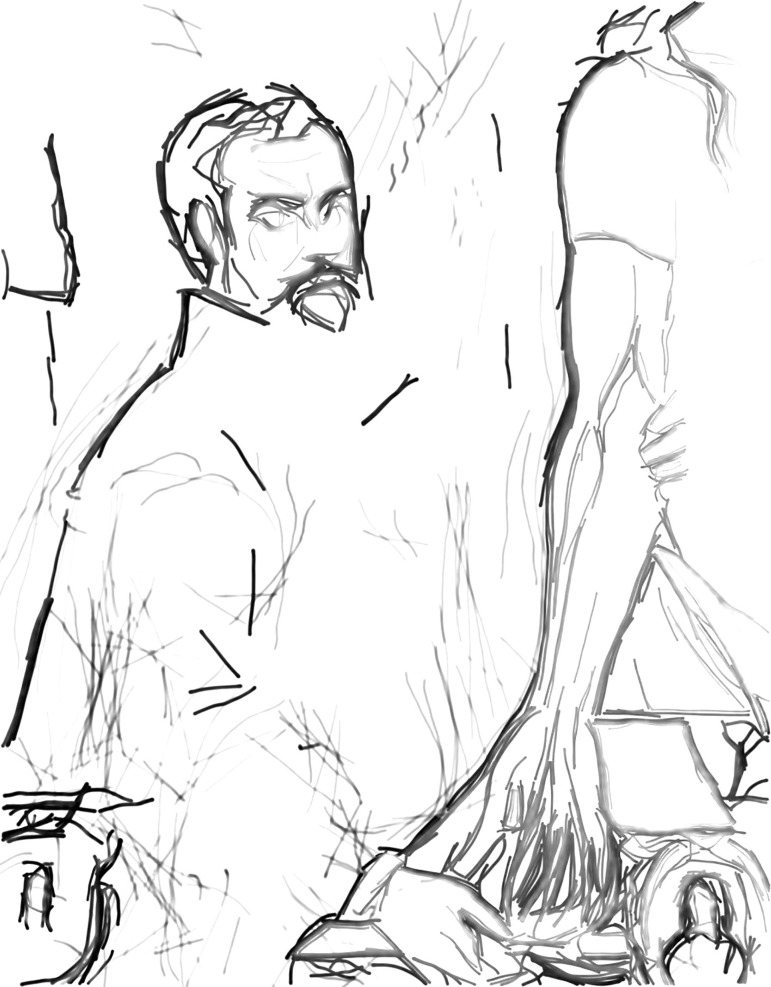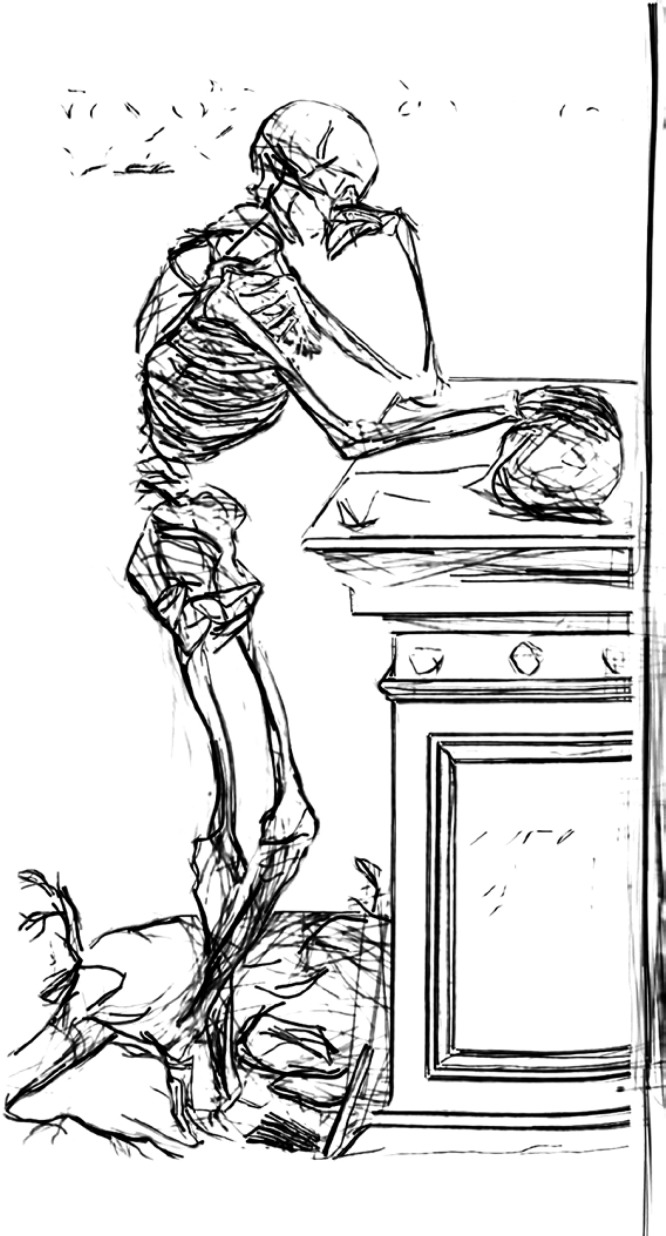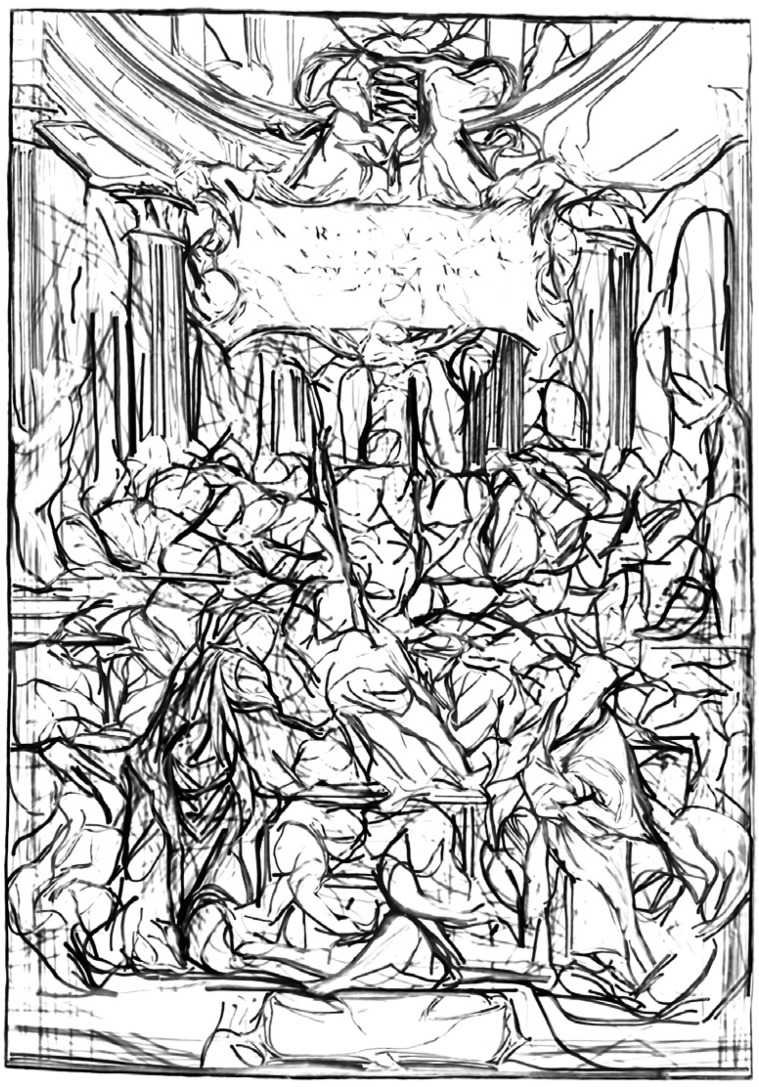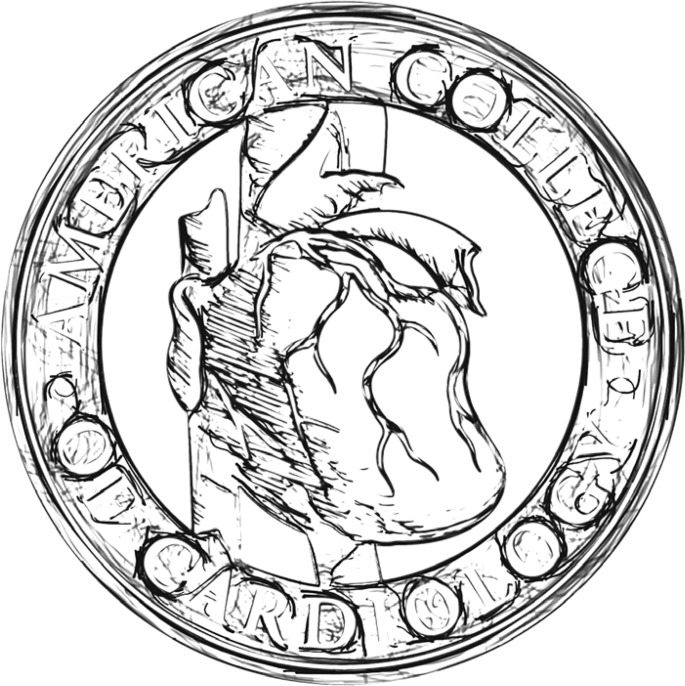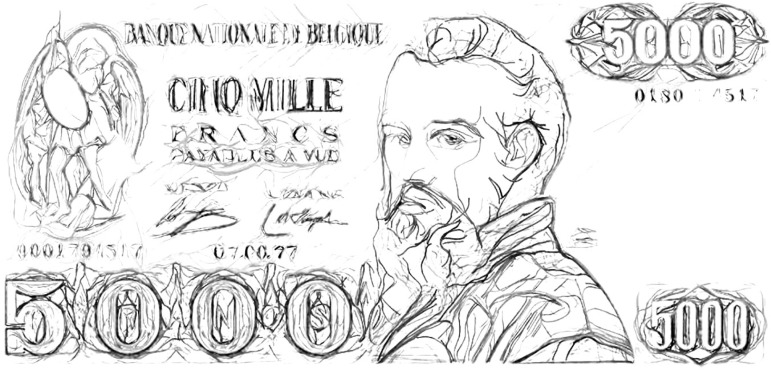Abstract
The history of medicine and cardiology is marked by some geniuses who dared in thinking, research, teaching and transmitting scientific knowledge, and the Italian Andreas Vesalius one of these brilliant masters. His main scientific work "De Humani Corporis Fabrica" is not only a landmark study of human anatomy but also an artistic work of high aesthetic quality published in 1543. In the year 2014 we celebrated 500 years since the birth of the brilliant professor of Padua University, who with his courage and sense of observation changed the understanding of cardiovascular anatomy and founded a school to date in innovative education and research of anatomy. By identifying "the anatomical errors" present in Galen's book and speech, he challenged the dogmas of the Catholic Church, the academic world and the doctors of his time. However, the accuracy of his findings and his innovative way to disseminate them among his students and colleagues was essential so that his contributions are considered by many the landmark of modern medicine. His death is still surrounded by mysteries having different hypotheses, but a certainty, suffered sanctions of the Catholic Church for the spread of their ideas. The cardiologists, cardiovascular surgeons, interventional cardiologists, electrophysiologists and cardiovascular imaginologists must know the legacy of genius Andreas Vesalius that changed the paradigm of human anatomy.
Keywords: Anatomy, History of Medicine, Cardiology
Abstract
A história da medicina e da cardiologia é marcada por alguns gênios que ousaram na forma de pensar, investigar, ensinar e transmitir o conhecimento científico, sendo o italiano Andreas Vesalius um desses brilhantes mestres. A sua principal obra científica "De Humani Corporis Fabrica" não é apenas um marco do estudo da anatomia humana, mas também uma obra artística de elevada qualidade estética publicada no ano de 1543. No ano de 2014, comemoraram-se 500 anos do nascimento do genial professor da universidade de Pádua, que com sua coragem e senso de observação mudou o entendimento da anatomia cardiovascular e fundou uma escola até hoje inovadora no ensino e na investigação da anatomia. Ao identificar "os erros anatômicos" presentes nos livros e discurso de Galeno, desafiou os dogmas da Igreja Católica, o mundo acadêmico e os médicos do seu tempo. No entanto, a exatidão de seus achados e sua forma inovadora de disseminá-los junto aos seus alunos e colegas foi fundamental para que suas contribuições sejam consideradas por muitos o marco da moderna medicina. A sua morte ainda hoje é cercada de mistérios, havendo diferentes hipóteses, porém uma certeza, sofreu sansões da Igreja Católica pela difusão de suas ideias. O cardiologista clínico, cirurgiões cardiovasculares, hemodinamicistas, eletrofisiologistas e imaginologistas cardiovasculares devem conhecer os legados do gênio Andreas Vesalius, que mudou o paradigma da anatomia humana.
INTRODUCTION
The history of medicine is marked by men and scientific discoveries that have transformed how medical pratice is conducted and knowledge of biological phenomena in the human body both in health and in disease, the professor of anatomy and physician Andreas Vesalius was one of these geniuses.
The medieval world was gradually giving rise to a new thinking present in arts, music, literature, science and medicine, where the human body became worshiped, studied and thus better understood its aesthetic, functional and anatomical value. In addition, the observation followed by experimentalism and critical thinking were central to change the way how we search for solutions and see the world. Galen's ideas that influenced for 15 centuries teaching and medical practice were progressively challenged and replaced front of new evidence from the observational method and systematic experimentation.
The Italian peninsula, the cradle of the Renaissance, was where were consolidated two important universities -Bolonha and Pádua- that enabled new knowledge in the academic environment, broadened the knowledge and promote the free debate of ideas, allowing that a new scientific research model, the Scientific Method, could advance over the dogmatic knowledge that influenced medical education from Galen's texts.
Cardiology and Cardiovascular Surgery, as medical specialties that emerged centuries later, have large debts to Vesalius as he questioned and shown through his systematic study of the heart, Galen's errors concerning this organ, and formed the basis for that years later, Harvey -also a student in Pádua University- demonstrates the role of circulation involving the heart and blood vessels.
The story of Vesalius combines a revolutionary approach to anatomy, innovative teaching method through the execution of dissection by the professor of medicine alongside the students and an innovative technique of publication. Those were made possible by the university environment of Padua in the Venetian Renaissance setting and, this way, a testament to the history of medicine of the importance and benefits between science and art, in particular with the publication of his important book "De Humani Corporis Fabrica" becoming certainly the father of modern anatomy. Besides, due to his ideas ahead of time and the content of his literary works he suffered persecution of religious and political attitude that contributed to his tragic end.
Free will, critical thinking and freedom of expression, which still in the contemporary world faces challenges and threats, in the Renaissance period was through him that we began to consolidate a new paradigm of looking at scientific phenomena - the scientific method.
The aim of this review is to present a summary of his career as a physician and anatomist and his important anatomical contributions as a legend of Medicine.
GALEN OF PERGAMUM AND HIS INFLUENCE ON CARDIOVASCULAR ANATOMY AND PHYSIOLOGY
Claudius Galenus, also known as Galen of Pergamum, was one of the most influential Roman physicians of Greek origin, his theories dominated the practice and medical science for over 15 centuries. Galen made important contributions to distinguish veins, arteries and the venous blood from the arterial blood, besides the concept of the brain controlling the body and the role of the kidneys in the urine formation[1,2].
In his treatise "De usu Partium" he expresses his theory about blood circulation. According to his concept venous blood present the function of nourishing the body, as this would be secondary to the absorption of the useful part of the food and its subsequent transformation in the liver, an organ which has key role in maintaining the circulatory system[2].
This venous blood reaches the heart and lungs, where in addition to the nutrients being consumed, a portion of it would pass through the pores in the interventricular septum and in the process it would get in touch with the pneuma from the lungs and the very center of the innate heat, leading to the formation of the arterial blood which is responsible for distributing the vital heat around the living body. Therefore, according to this view both venous and arterial blood circulate together and were governed by repelling properties by the heart and liver, and the attraction of other body organs[2].
PARADIGM SHIFT IN MEDICINE
In many societies, formerly, the dissection was a prohibited act to be performed in human bodies, animals were the only source for some of these, which provided poor anatomical knowledge or misapplication of it by trying to interpret these findings to humans. The first anatomists, properly, probably emerged only in the Hellenistic Alexandria, with Herophilus and Erasistratus, being considered the medical school founders in the region and performed dissections in public. Herophilus, in particular is considered the father of anatomy, accounting for important descriptions of the structure and functioning of nerves and vessels[3].
Only in the mid-twelfth century, with the rediscovery of Aristotle's works, it was found that some studies were based on the dissection of animals and vivisection of these, which somehow legitimized the practice at this time, being an important driver to beginning of a new ideology that would allow less restricted execution of human dissection. Those subject to dissection varied during the historical context, from a private investigation because of a noble death, the ultimate form of humiliation for criminals during public practice, until the Renaissance in which the dissection of bodies is progressively introduced to medical universities and reaches a status of academic importance.
The Renaissance had an important scientific milestone to Medicine fostering research on the organizer components of the human body through dissection of cadavers, process which won not only public notoriety due to the associated status, as well as its relation to teaching in universities. However, even before the descriptions made by Vesalius another important name in human history has contributed significantly to medicine in the field of anatomical research. Leonardo Da Vinci, and his numerous projects in the areas of math, engineering and aerodynamics, made several anatomical drawings with detail and often his questions with regard to the physiological functioning became the basis for numerous other researchers after him, being one of the inspirations for Vesalius.
TRAJECTORY OF ANDREAS VESALIUS
Andreas Vesalius was born on December 31, 1514 in Brussels, Belgium, being the son of a family of physicians where both his father and his grandfather had served the emperor of the Holy Roman Empire. (Figure 1)
Fig. 1.
Painting showing Andreas Vesalius in his dissection activity (Adapted[11]).
After a study phase in Louvain, where he learned classical languages, went to medical degree in Paris in 1533, where he was student of the first French anatomist Johannes Quinterus of Andernach and Jacobus Sylvius. The latter was very committed to Galen's ideas, making the study of anatomy frustrating in Paris. The lack of anatomy practical classes at the University of Paris took him in with his peers to visit at night, cemeteries outside the city in search of human bones. This set of difficulties did the young man to return to Louvain in search for completing his studies in medicine[4,5].
In 1537, after completing his bachelor's degree, he sought the University of Padua to perform his doctorate, since it was the birthplace of Renaissance science and provided the best opportunity to advance his studies in the anatomy area. The influence of many other icons of this institution -as Pietro d`Abano, Alessandro Benedetti, Ermolao Barbaro and Giorgio Valla- allowed the advent of medical humanism with critical thinking. At 23, after completing his doctorate, he was appointed Professor of Surgery at the University of Padua, which at that time was also linked to the teaching of anatomy[4-6].
As a teacher promoted a major change in the teaching of anatomy by assuming the role of dissecting the corpses instead of assistants and barbers, common practice in major medical universities in Europe, making his lessons increasingly attractive to his students and colleagues. He liked to communicate directly with his pupils and never as an authority figure, but as someone that encourages them to examine, to perform experiments and to judge for themselves. The second major innovation promoted by the teacher Vesalius was the development of anatomical drawings with didactic purpose and six of them were published as the Tabulae Sex, with the help of artist Jan Stefan van Kalkar, a disciple of the great Italian Renaissance painter Titian. It can be said that the academic life contributed to instigate the constant search for knowledge of Vesalius as can be seen in one of his notes after students request that he prepare a draft of the venous circulation "that claim proved to be so pleasurable for doctors and students that they strongly encouraged me to describe the arteries and nerves"[4-7].
Vesalius was gradually becoming a more critical observer and, in his "Letter of Venesection," he abandons his beliefs in traditional and authorized teachings emanated from the influence of Galen, who built a human anatomy extrapolated from the dissection of animals, especially chimpanzees, and incorporates the principle that scientific knowledge should be based solely by the facts derived from observation. According to his observations Galen's errors occurred because he never dissected a human and for thinking that the information found on dissected animals could be applied to humans, and the very words of Vesalius, Galen was "fooled by his monkeys, and compared the similarities between the human body and monkeys, barely noticed they ended in the presence of fingers and knee bend"[4-6].
Thus, the Letter of venesection, published in 1539, is an important document that allows us to identify the transition from Vesalius knowledge of the traditional method for the method of direct observation which is consolidated in his masterpiece De Humani Corporis Fabrica, considered a pioneer mark of modern medical science. Even as a renowned teacher and anatomist he suffered strong opposition from those who still defended Galen's ideas, taking a wear in his academic life in the long run and one of the reasons for accepting to be a doctor of Emperor Charles V of Spain[4-8].
THE GREAT WORK - DE HUMANI CORPORIS FABRICA
Modern medicine can be marked by the production of the work De Humani Corporis Fabrica, published in 1543, this book is by far the largest single contribution to medical science, being a magnificent example of creative art, with a perfect combination of form, typography and illustration, as described by Saunders and O`Malley, important Vesalius' biographers. His work was so important that after a few weeks of publication was named Emperor Charles V's doctor[4,5,7-9].
It was composed of seven volumes, and the third volume was dedicated to the vasculature in which we find a detailed description of the arteries and veins that was possibly essential for the future work of William Harvey in his description of circulation. It was also through his experiments that it was able to link the relationship between pulse and heart contraction[4,5,7-9].
The VI volume refers to the anatomy of the heart and a small part about the lungs, this first edition despite the description of the heart to be well detailed it is not noted as exceptional to the point that is still rooted in the concepts of Galen, although refute the existence of pores that communicate the right side with the left side of the heart allowing blood to pass through the septum, a concept that helped to better understand the system[4,5,7-9]. (Figure 2)
Fig. 2.
Cover of his work De Humani Corporis Fabrica (Adapted[11]).
The illustrations drawn attention at the time because they were larger and closer to reality than any previous publication, and were very well applied didactically, as Vesalius often correlated visual content with text.
The second edition was published in 1555, having numerous improvements in the text, and expanded the chapter on his physiological experiments, including the report given on the effect of nerve section on laryngeal paralysis and recurrent laryngeal nerve section, besides adding the description of the venous valves and two new chapters. The illustrations were better due to the print quality in a thicker paper. In this edition, an important quote from Vesalius confirms the absence of pores invisible to the naked eye in the interventricular septum, moving away permanently from Galen's vision. A 2009 study found that there were a total of 113 copies of the second edition of De Humani Corporis Fabrica at major universities and libraries across Europe and the United States showing the rarity and historical importance that the work has even after 459 years of its publication[4,5,7-9]. (Figure 3)
Fig. 3.
Illustration of Andreas Vesalius’s work in an amphitheater (Adapted[11]).
CONTRIBUTIONS TO CARDIOVASCULAR SURGERY AND ANATOMICAL-CLINICAL CORRELATION
Vesalius' power of observation allowed him to describe quite accurately the pericardial anatomy: "The heart as a whole is covered by a membranous envelope which is not attached to any point. This wrap is much broader than the heart and has in its interior an aqueous humor...".
The prototype of anatomopathological methodology was performed by Andreas Vesalius in 1557, by correlating the signs and symptoms of a patient with pathological changes consistent with aortic aneurysm revealed in postmortem examination. This kind of research allowed in 1707 in Bologna, Giovanni Morgagni to describe the possibility of diagnosis based on findings of the "Anatomy of morbid corpses", this clinicopathological project culminated in the publication of his iconic work "The Seats and Causes of Diseases Investigated by Anatomy" in which approximately 700 dissection reviews were described to accurately identify the injury giving rise to the symptoms observed in patients while they were alive, consolidating a new way of thinking and teach medicine, the anatomoclinical correlation[5,7-9].
There has been evidence that Vesalius was preparing a third edition of his De Humani Corporis Fabrica work because they found in his works, thousands of notes and corrections of all kinds, from deletions, additions and transpositions phrases to footnotes. Particularly the first three quarters of his work contained many modifications and to this day it is not know why this third edition was never released. Still, these changes demonstrate an admirable concern for the quality of his work and a willingness to correct even the smallest details[4,5,7-9].
DEATH OF ANDREAS VESALIUS AND THE RECOGNITION OF HIS LEGACY
During his career as a doctor of the emperor he poorly attended teachings of anatomy, he rarely did dissections in Padua and Pisa, as he spent most of the time attending royalty in the Netherlands and later in Spain. With no intention of returning to academic life soon he burned many of his books including the notes he had made during the years. Remained as a doctor of Charles V and, 12 years later, his successor Philip II. After a while he regretted the incident and returned to his hometown - Brussels - with a fortune conquered by his services to the most important monarch of his time and it was then that his desire for dissections resurfaced. There are few records of its activities after 1555, but it is known that he participated in the treatment and autopsy of famous names like Ferrante Gonzaga of Mantua and Henri II of France[4,5].
His last publication was Anatomicarum Gabrielis Falloppii Observationum Examen dated May 24, 1564, and since 1559 he moved with his wife to Spain, which stated to be a place where he had few opportunities to perform dissection and lived there until the event of his death.
The death of Vesalius is still controversial, different sources point that he would have been the target of the Inquisition and had to exchange his penalty for a pilgrimage to the Holy Land. At the time of his departure from Madrid to his pilgrimage he clearly had a desire to return to the intellectual and scientific environment of the University of Padua according to a letter sent to his great disciple Fallopius. In return, in 1564, was the victim of a shipwreck and his body found by a goldsmith and later buried on the Greek island of Zakynthos where a tomb was found presenting an epitaph written the following sentence: "The genius lives forever, everything else is mortal - Andreas Vesalius of Brussels"[4,5].
An important acknowledgment of the legacy of Vesalius in Cardiology was the tribute by the American College of Cardiology. It's logo created in 1965 is a modified heart figure designed by Andreas Vesalius in his Tabulae anatomicae sex. As it was chosen by Franz Maximilian Groedel, he aimed that this logo would have a strong identification with the scientific knowledge, a "learning seal"[10,11] (Figure 4).
Fig. 4.
Seal of the American College of Cardiology (Adapted[11]).
The genius of Vesalius's work has been recognized not only by the scientific community, but by the different nations, whether in the form of stamps, notes, cultural or scientific events (Figure 5).
Fig. 5.
Commemorative bill to 500 years of Vesalius (Adapted[11]).
CONCLUSIONS
All the works of Andreas Vesalius places him as a genius with multiple skills as an artist, naturalist, humanist and the first modern medical scientist thus included among the giants of the history of medicine. His scientific contributions and his legacy as a teacher and artist promoted a profound impact also in Cardiology and Cardiovascular Surgery.
| Authors’ roles & responsibilities | |
|---|---|
| ETM | Final approval of the manuscript; study design; writing of the |
| manuscript and critical review of its contents | |
| CVSJ | Final approval of the manuscript; design and study design; |
| writing of the manuscript or critical review of its content | |
| TRF | Drafting of the manuscript and critical review of its content |
Footnotes
This study was carried out at Universidade Federal Fluminense (UFF), Niterói, RJ, Brazil.
No financial support.
REFERENCES
- 1.Haas LF. Claudius Galen 131-201 AD. J Neurol Neurosurg Psychiatry. 1991;54(4):287–287. doi: 10.1136/jnnp.54.4.287. [DOI] [PMC free article] [PubMed] [Google Scholar]
- 2.Fullerton JB, Silverman ME. Claudius Galen of Pergamum: authority of medieval medicine. Clin Cardiol. 2009;32(11):E82–E83. doi: 10.1002/clc.20388. [DOI] [PMC free article] [PubMed] [Google Scholar]
- 3.Bay NS, Bay BH. Greek anatomist herophilus: the father of anatomy. Anat Cell Biol. 2010;43(4):280–283. doi: 10.5115/acb.2010.43.4.280. [DOI] [PMC free article] [PubMed] [Google Scholar]
- 4.O'Malley CD. Andreas Vesalius 1514-1564: In memoriam. Med Hist. 1964;8:299–308. doi: 10.1017/s002572730002977x. [DOI] [PMC free article] [PubMed] [Google Scholar]
- 5.Haas LF. Andreas Vesalius (1514-64) J Neurol Neurosurg Psychiatry. 1992;55(1):3–3. doi: 10.1136/jnnp.55.1.3. [DOI] [PMC free article] [PubMed] [Google Scholar]
- 6.Castiglioni A. Andreas Vesalius: Professor at the Medical School of Padua. Bull N Y Acad Med. 1943;19(11):766–777. [PMC free article] [PubMed] [Google Scholar]
- 7.Nutton V. Vesalius revised. His annotations to the 1555 Fabrica. Med Hist. 2012;56(4):415–443. doi: 10.1017/mdh.2012.26. [DOI] [PMC free article] [PubMed] [Google Scholar]
- 8.Joffe SN. A census of the edition of 1555 of Andreas Vesalius' De Humani Corporis Fabrica. Int Arch Med. 2009;2(1):26–26. doi: 10.1186/1755-7682-2-26. [DOI] [PMC free article] [PubMed] [Google Scholar]
- 9.Dunn PM. Andreas Vesalius (1514-1564), Padua, and the fetal "shunts". Arch Dis Child Fetal Neonatal Ed. 2003;88(2):F157–F159. doi: 10.1136/fn.88.2.F157. [DOI] [PMC free article] [PubMed] [Google Scholar]
- 10.Zampieri F, Basso C, Thiene G. Andreas Vesalius' Tabulae anatomicae sex (1538) and the seal of the American College of Cardiology. J Am Coll Cardiol. 2014;63(7):694–695. doi: 10.1016/j.jacc.2013.09.031. [DOI] [PubMed] [Google Scholar]
- 11.Saunders JBDCM, O'Malley CD. Andreas Vesalius de Bruxelas De Humani Corporis Fabrica.Epitome. Tabulae Sex. Campinas, São Paulo: Editora Unicamp, Imprensa Oficial; 2003. [Google Scholar]



